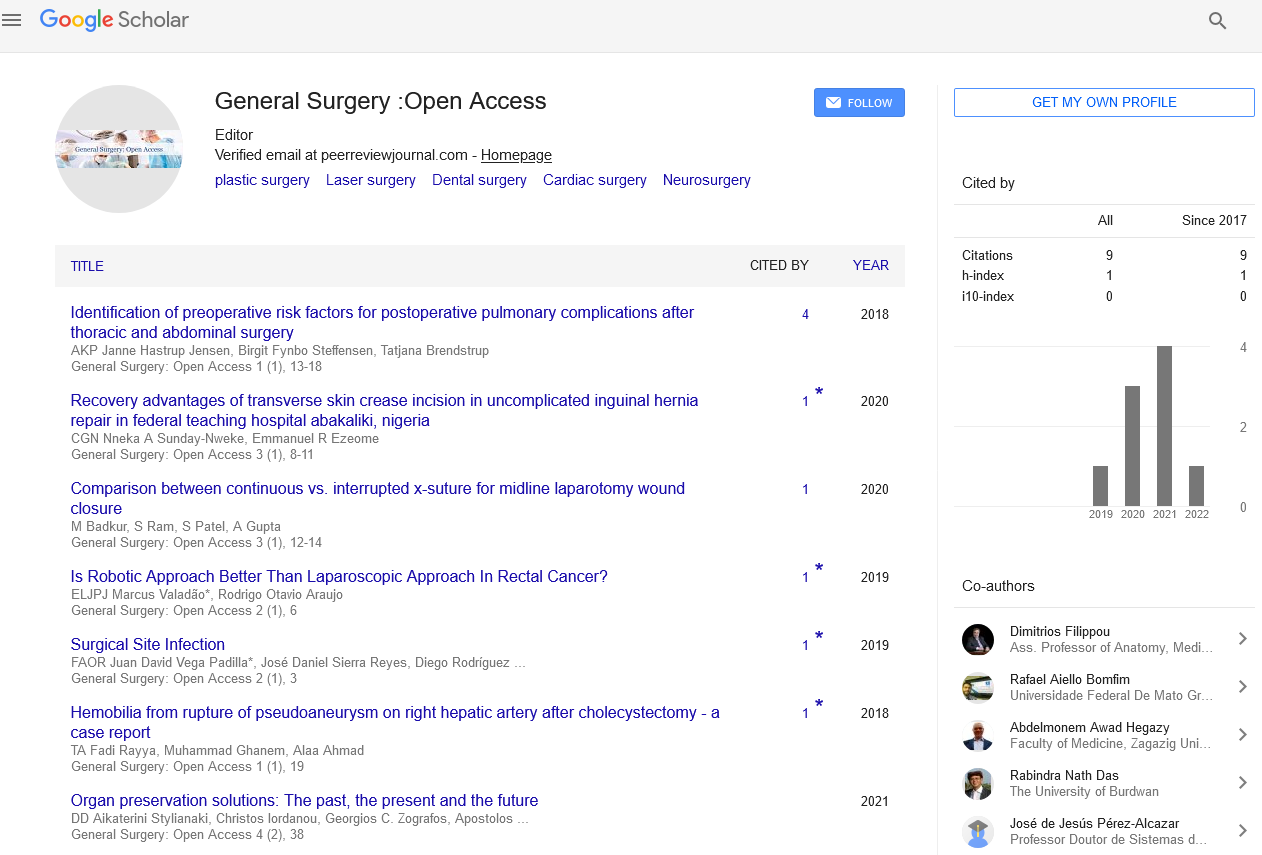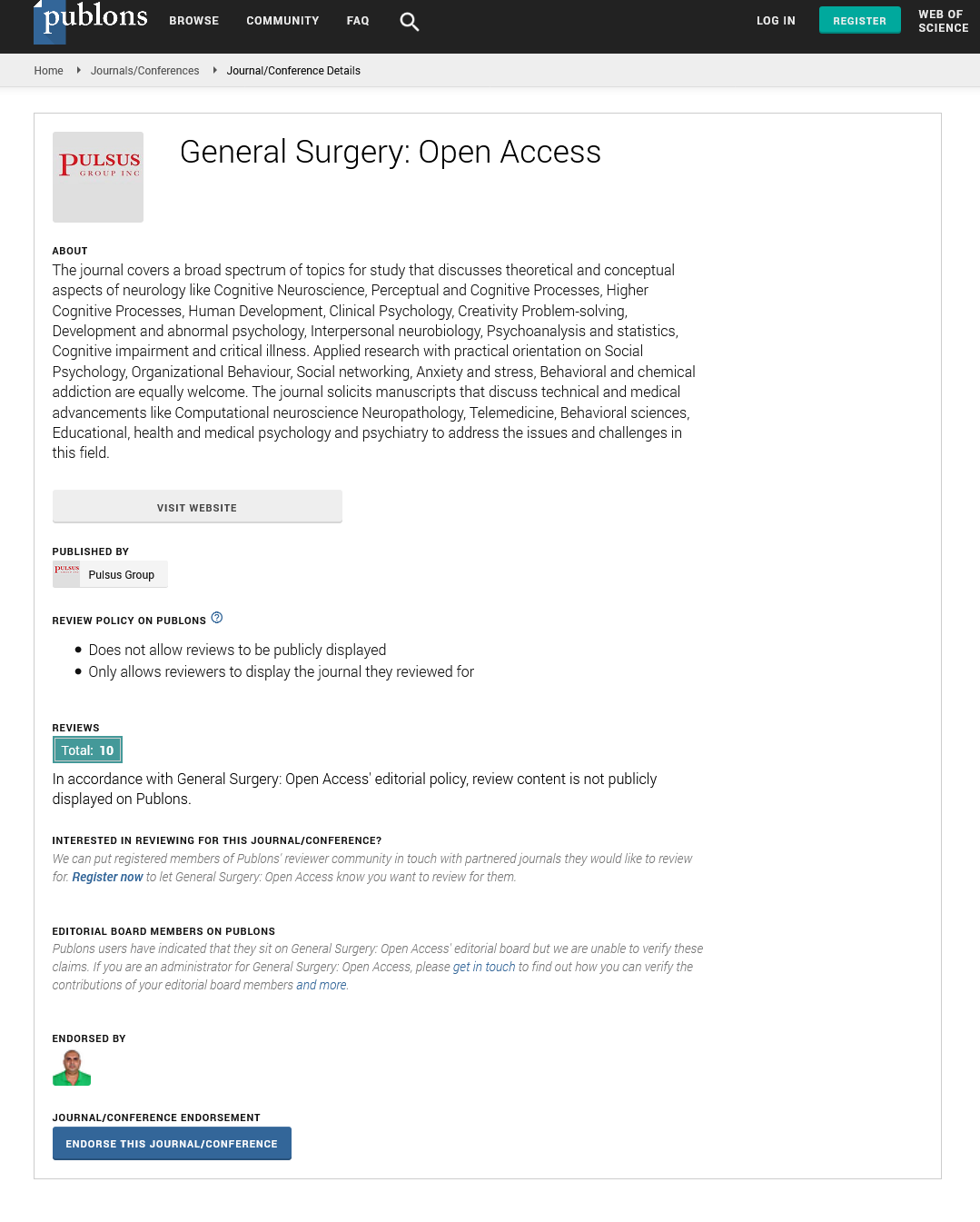Short note on acute pancreatitis
Received: 06-Sep-2021 Accepted Date: Sep 20, 2021; Published: 27-Sep-2021
Citation: Nakazima N. Short note on acute pancreatitis. Gen Surg: Open Access. 2021;4(5):50.
This open-access article is distributed under the terms of the Creative Commons Attribution Non-Commercial License (CC BY-NC) (http://creativecommons.org/licenses/by-nc/4.0/), which permits reuse, distribution and reproduction of the article, provided that the original work is properly cited and the reuse is restricted to noncommercial purposes. For commercial reuse, contact reprints@pulsus.com
Description
Acute pancreatitis is inflammation of the pancreas that is painful and sometimes deadly. The main symptom of pancreatitis is stomach pain. It usually decreases within a few days, but sometimes it becomes severe and very serious. The most common causes of acute pancreatitis are gallstones and high amounts of alcohol consumption. The pancreas is a long, flat gland behind the stomach in the upper abdomen. It produces digestive enzymes and hormones that regulate the way the body processes glucose, for insulin. The most common cause of pancreatitis is gallstones, but an increase in alcohol abuse is associated with an increase in its incidence. Alcohol now accounts for about 30% of cases. Acute pancreatitis begins suddenly, but chronic pancreatitis is recurring or persistent. Typically, the person with pancreatitis will experience a sudden onset of pain in the center of the upper abdomen, below the breastbone (sternum). Pain rarely occurs first in the lower abdomen. It gradually becomes more intense until it is a constant pain. The pain can continue to increase and become severe. In about half of the cases, it also spreads to the back. Eating can make pain worse. Pancreatitis caused by gallstones develops very quickly. If it is caused by alcohol consumption, symptoms will develop more slowly over several days. Leaning forward or assuming a fetal position (curling up) may help relieve some of the pain. Anyone in constant pain should see a doctor. Despite significant advances in intensive care medicine over the past 20 years, the death rate from acute pancreatitis is around 10%. Diagnosing pancreatic problems is often difficult, and treatments are delayed because the organ is relatively inaccessible. There are no easy ways to directly view the pancreas without surgery, and the available imaging techniques are often inadequate. In addition to the acute form, there are hereditary and chronic forms of pancreatitis that can devastate a person for many years. People often experience pain and malnutrition and are most likely at increased risk for pancreatic cancer. The most common cause of acute pancreatitis is gallbladder stones. Gallstones pass through the main bile duct and enter the small intestine. At the entrance to the small intestine, the main duct of the pancreas joins or is immediately next to the main bile duct. Stones stuck in the main bile duct are thought to hit the main duct of the pancreas, preventing normal flow of pancreatic fluid and causing pancreatic injury. Another way that a stone can cause pancreatitis is by causing bile to back up into the pancreatic duct, resulting in pancreatic injury. While the actual mechanism by which gallstones cause pancreatitis is not entirely certain, the link between gallstones and pancreatitis is clear. There are more than 300,000 hospital admissions for acute pancreatitis each year. Prevention of relapse is a primary goal of treatment, with efforts focused on recognizing the underlying cause and trigger to prevent them in future. A person with acute pancreatitis usually looks and feels very ill and needs immediate medical attention. Most cases require 3 to 5 days of hospitalization for close monitoring, pain control, and intravenous hydration.






